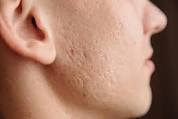**Stepping into Comfort: Understanding and Managing Corns on Feet**
Corns, those pesky little patches of hardened skin, are a common foot ailment that can cause discomfort and pain for many individuals. Whether you're a seasoned runner, a dedicated dancer, or simply someone who spends a lot of time on their feet, dealing with corns can be a frustrating experience. In this comprehensive blog, we'll explore everything you need to know about corns on feet, including their causes, symptoms, treatment options, and strategies for prevention.
**Understanding Corns on Feet:**
Corns, also known as helomas, are thickened areas of skin that develop in response to pressure or friction. They typically form on the feet, particularly on the toes, the sides of the feet, or the soles, where excessive pressure or rubbing occurs. Corns can vary in size, shape, and appearance, ranging from small, hard bumps to larger, softer patches of skin.
**Causes of Corns on Feet:**
Several factors can contribute to the development of corns on the feet, including:
1. **Ill-Fitting Shoes:** Wearing shoes that are too tight, too loose, or have inadequate support can increase the risk of corns by causing friction or pressure on the skin.
2. **Foot Deformities:** Structural abnormalities such as hammertoes, bunions, or flat feet can alter the distribution of pressure on the feet, leading to the formation of corns.
3. **High-Impact Activities:** Engaging in activities that involve repetitive or high-impact movements, such as running or dancing, can increase the risk of corns due to increased friction and pressure on the feet.
4. **Footwear Materials:** Certain materials, such as synthetic fabrics or stiff leather, can exacerbate friction and rubbing, contributing to the development of corns.
5. **Foot Hygiene:** Poor foot hygiene, including inadequate washing or drying of the feet, can create a moist environment that promotes the formation of corns.
**Symptoms of Corns on Feet:**
The symptoms of corns on the feet can vary depending on the size, location, and severity of the corn. Common symptoms include:
- **Localized Pain:** Corns may cause pain or discomfort, particularly when walking or wearing tight shoes.
- **Hardened Skin:** Corns are characterized by thickened, hardened areas of skin that may appear yellowish or grayish in color.
- **Tenderness:** Corns may be tender to the touch, especially when pressure is applied.
- **Inflammation:** In some cases, corns may become inflamed or swollen, particularly if they are irritated or infected.
**Treatment Options for Corns on Feet:**
Fortunately, there are several treatment options available to help manage corns on the feet and alleviate discomfort. Some common treatment options include:
1. **Padding or Cushioning:** Applying cushioning pads or moleskin to the affected area can help reduce pressure and friction, providing relief from discomfort.
2. **Orthotic Inserts:** Custom orthotic inserts or over-the-counter shoe inserts can help redistribute pressure on the feet and provide additional support and cushioning.
3. **Proper Footwear:** Wearing well-fitting, supportive shoes with ample room for the toes can help prevent corns and alleviate pressure on the feet.
4. **Corn Removal:** In some cases, corns may need to be removed by a healthcare professional using special instruments or techniques. This should only be done by a trained professional to avoid injury or infection.
5. **Topical Treatments:** Over-the-counter topical treatments containing salicylic acid or urea can help soften and remove the hardened skin of corns, making them easier to manage.
6. **Home Remedies:** Soaking the feet in warm water, gently exfoliating the skin with a pumice stone, and moisturizing regularly can help prevent and manage corns at home.
**Prevention Strategies for Corns on Feet:**
Preventing corns on the feet involves taking proactive measures to reduce friction, pressure, and irritation. Some effective prevention strategies include:
1. **Choose Proper Footwear:** Select shoes that fit well, provide adequate support, and have a roomy toe box to prevent friction and pressure on the toes.
2. **Wear Socks:** Wearing moisture-wicking socks can help keep the feet dry and reduce friction, particularly during high-impact activities.
3. **Maintain Foot Hygiene:** Wash and dry the feet thoroughly, paying special attention to the areas between the toes, to prevent moisture buildup and reduce the risk of fungal infections.
4. **Use Protective Padding:** Apply cushioning pads or silicone sleeves to areas of the feet prone to friction or pressure, such as the toes or the sides of the feet.
5. **Regular Foot Care:** Regularly inspect the feet for signs of corns, blisters, or other foot problems, and address any issues promptly to prevent them from worsening.
**Conclusion:**
Corns on the feet may be a common nuisance, but they need not interfere with your comfort or mobility. By understanding the causes, symptoms, treatment options, and prevention strategies for corns, you can take proactive steps to manage and minimize their impact on your feet and overall well-being. Whether seeking professional treatment for existing corns or adopting preventive measures to avoid future occurrences, know that help and support are available to guide you on your journey to happy, healthy feet.
Call now
on our Mobile 8669086098 to book an appointment
Kindly visit our website Corn on Feet to know more.
#cornonfeet #corn #hardenedskin #footailment #helomas #thickendskin #skininflammation
#cornremoval




Comments
Post a Comment